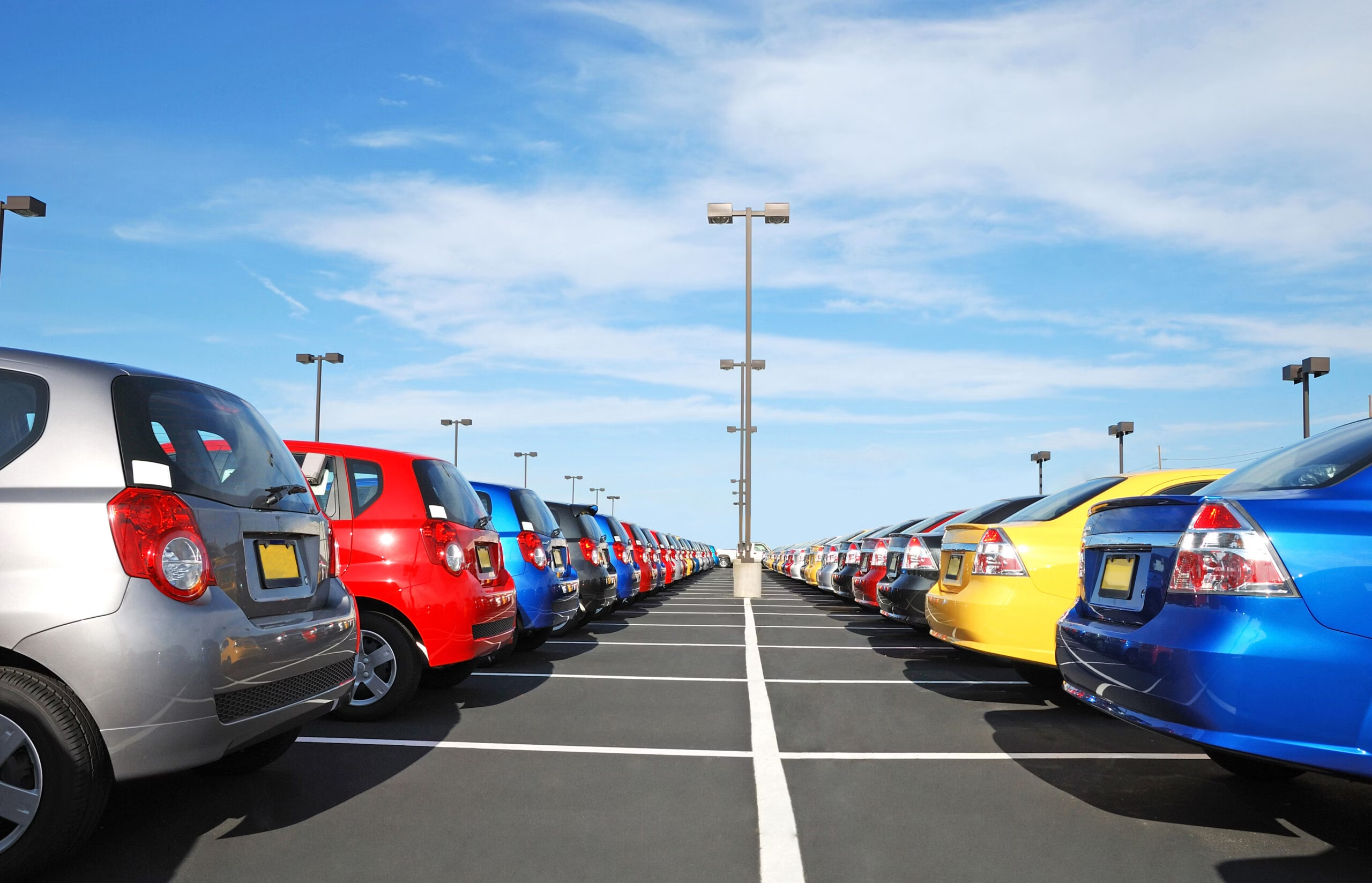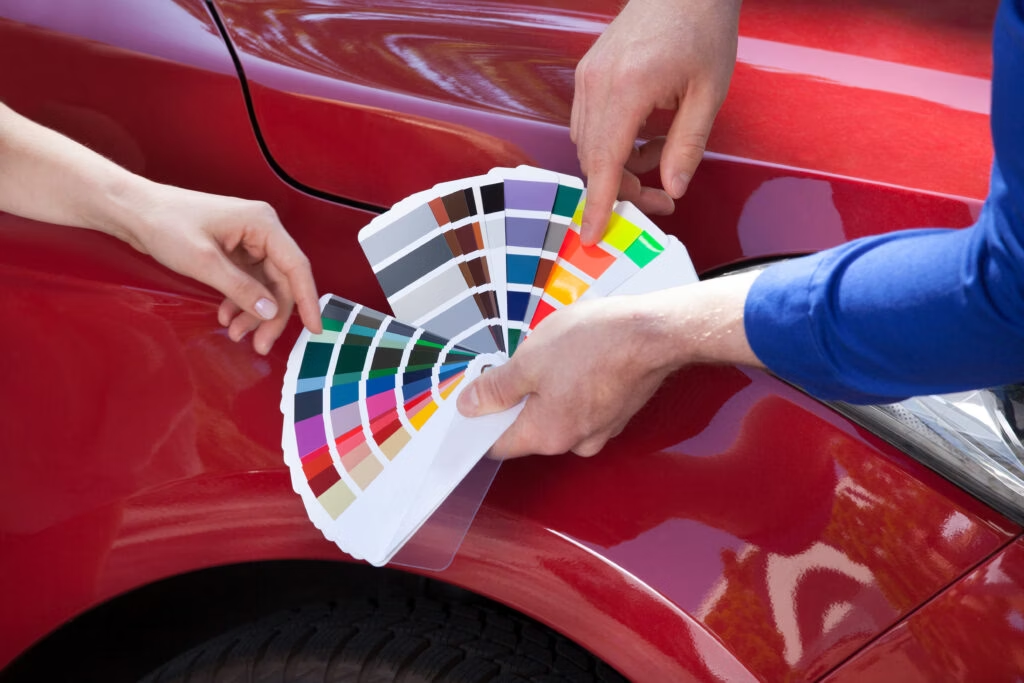Does colour impact the value of your car?
It’s important to never underestimate the power of taste. What we like impacts the cars we buy, which can impact which models manufacturers continue to produce, greater supply and demand trends, and more.
One factor that can have an instant impact is colour. In addition to shaping how you feel about your ride, vehicle colour can shape perceptions of car condition and its resale appeal and value over time. While popular colours like white, black, and silver often maintain higher resale values, unique or rare colours may attract niche buyers willing to pay a premium.

Whether you’re looking to buy or sell your vehicle, dive into the world of colour to make the most informed decision in today’s turbulent automotive market.
- Popular car colours
- Market trends
- Psychological impact of colour
- Colour maintenance costs
- Colour and perception of vehicle condition and age
- FAQs
- How can I track the value of my car?
- Ready to sell your car?
Popular car colours

While everyone has a favourite colour, a handful of more neutral hues have historically played well in both the new and used car markets here in the UK. Vehicles in the following five colours often earn higher resale prices when compared to cars in brighter and more fanciful colours.
In fact, cars with unconventional or less popular colours may depreciate more rapidly, affecting the overall cost of ownership.
🎨 White – Consistently ranks as one of the most popular car colours globally due to its timeless appeal, perceived cleanliness, and versatility across different vehicle types. However, white paint will also show any dings and dirt, meaning you may need to wash your car more often.
🎨 Black – Black cars are synonymous with elegance and sophistication, so it’s no surprise that the colour is a popular choice for luxury vehicles and aspirational mass-market rides. As it’s non-offensive, black often enhances car or van resale value.
🎨 Silver – Silver provides a modern and sleek aesthetic, with the added benefit of hiding dirt and scratches. It’s therefore a practical colour choice for manufacturers and drivers alike.
🎨 Grey – Neutral and understated, grey cars appeal to buyers seeking a balance between sophistication and practicality. Like their silver counterparts, grey helps hide dirt and damage and contributes to strong vehicle resale values.
🎨 Blue – Blue cars and vans come in a wide range of shades, from vibrant hues to muted tones. This diversity helps the colour appeal to a broad range of preferences and maintain consistent popularity.
Market trends
As seen, the preference for neutral coloured vehicles continues to dominate the global automotive market due to broad appeal among diverse audiences. However, trends are always changing!
Have you ever noticed that style preferences shift depending where you are? Vehicle colour preferences are the same way and can vary regionally based on cultural influences, climate, and local trends. For example, as black retains heat, you can expect to see less black vehicles along the Southeast coast. No one wants to get into a hot car after sitting on Brighton beach all day!
Fashion trends both inside and outside of the automotive world also impact how we think about car colour. Advancements in paint technology are bringing more colours than ever before to the car market, while more general tech leaps are connecting us unlike ever before. This means that colour trends spread quickly, but also can change at the drop of a hat based on what’s seen as ‘in’ this season.
Finally, UK car buyers are increasingly looking for vehicles that they can personalise. This consumer interest in car modification has given rise to manufacturers across the board offering expansive customization options to let buyers further personalise their vehicles.
Psychological impact of colour

Understanding the psychological impact of colour choices is crucial in the automotive industry. Specific colours can evoke specific emotions and carry certain perceptions, both of which influence purchasing decisions – whether we know it or not.
Black signifies sophistication and luxury, often appealing to those seeking prestige. This is one reason why so many limousines and premium vehicles (think BMW, Lamborghini, and so on) are black.
On the other side of the colour spectrum, white symbolises purity and cleanliness. White cars and cans often attract buyers looking for a fresh, modern aesthetic.
Brighter colours like red or yellow can evoke excitement and energy. These also add a bit of flair to the overall driving experience, allowing drivers to spotlight their personalities while on the road. However, bolder hues may also attract unwanted attention, so always watch your speed!
Blue is a soothing colour. In the car world, it often conveys trust and reliability – two of the biggest factors that drivers look for when buying vehicles.
Colour maintenance costs
It’s one thing to pick the colour of your car, but maintaining it is quite another. When considering colour options, keep in mind the following – they could have a big impact on overall vehicle costs!
Visibility of imperfections
Light-coloured cars, such as silver, may show dirt and scratches less prominently than darker colours like black or navy blue. The one exception here is white: unfortunately, white paint can draw attention to any exterior imperfections. Because of this, you may be in for more regular cleaning and detailing to maintain the appearance, factors which can increase overall maintenance expenses.
Heat absorption
Darker colours tend to absorb more heat from sunlight, potentially leading to faster deterioration of exterior paint and increased risk of fading. Additional measures like waxing or applying protective coatings may be necessary to keep your car or van looking new.
Repair costs
As with all car parts, paint will deteriorate over time. To help maintain your car’s colour, we recommend a comprehensive wax at the start of each winter season, as snow, ice, and salt all damage paint chips. Additionally, regular car washes help remove salt, dirt, and other debris from the road that dull your car’s colour and can damage its paintwork in the long run.
Certain vehicle colours may require more expensive paint or specialised techniques for repairs, which can impact the cost of bodywork and touch-ups. Matching paint colours precisely, especially for metallic or pearl finishes, can be challenging (and costly) for non-standard colours. In addition to footing the retouching costs, you may need to shop around to find a mechanic who has these colours in stock.
Corrosion protection
Lighter colours may be more resistant to heat-related corrosion, as they reflect sunlight and heat more effectively. Darker colours, particularly those with metallic or pearl finishes, may require additional anti-corrosion treatments to protect against oxidation and rust formation.
Corrosion protection is especially important if you have a SORN car that’s in storage.
Colour and perception of vehicle condition and age
The colour of a car significantly influences how we think about its condition and age. When well-maintained, lighter colours often convey a sense of cleanliness and modernity, suggesting a functional and newer vehicle.
In contrast, darker colours such as black or navy blue may mask imperfections but can also appear dated or show signs of wear more prominently.
More unique vehicle colour choices can instantly date a car, especially if the exterior hue is unconventional or isn’t on trend anymore. This can limit the pool of potential buyers and contribute to lower resale prices.
To maximise resale value with car colour, general advice is to stick to classic colours for broad market appeal.

FAQs
What colour adds the most value to a car?
The colour that adds the most value to a car varies, but neutral colours like white, black, and silver often have broader appeal. Their higher resale values are due to the colours’ timeless aesthetic and versatility across different consumer preferences.
What is the hardest colour of car to sell?
The hardest colour of car to sell depends on market trends and buyer preferences. Typically, unconventional or niche colours may be more challenging to sell as they appeal to a narrower audience, limiting the pool of potential buyers and potentially reducing resale value.
However, regional preferences as well as supply and demand also play a role in colour tastes.
What is the cheapest colour to paint a car?
The cheapest colour to paint a car is often white or black, as these are standard colours requiring fewer pigment additives. Solid colours are generally less expensive than metallic or pearl finishes, offering a more cost-effective painting option.
How can I track the value of my car?
If you’re not sure what your car’s value is to begin with, it’s hard to know how its colour affects its price.
All vehicles depreciate at varying rates, with no rule of averages accurately describing any one car’s changing value. Motorway’s Car Value Tracker provides a free, reliable monthly price alert for up to six vehicles at once.
Follow changes to your car’s value to choose the best time to sell, and make informed choices about investments in your car’s maintenance.
Ready to sell your car?
Want to read more about owning, valuing, and selling your car? Check out more of our guides here, covering everything from depreciation to maintaining your car’s value. Understand your car’s worth in the wider market.
- Sell my car
- Track your car value
- How much is your car worth?
- How much does mileage affect car value?
- Does age impact the value of your car?
- Does service history impact the value of your car?
- Does market demand impact the value of your car?
- Does fuel type impact the value of your car?
- Do modifications impact the value of your car?
- Does the number of owners impact the value of your car?